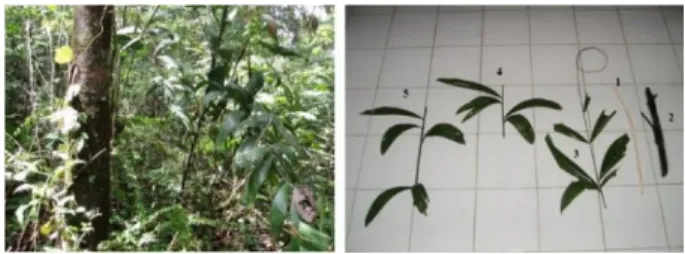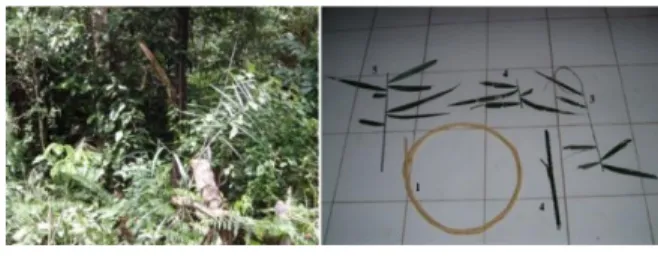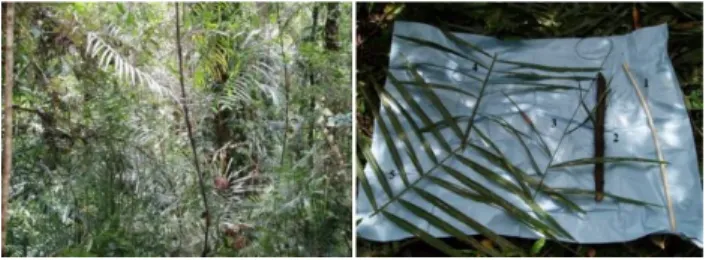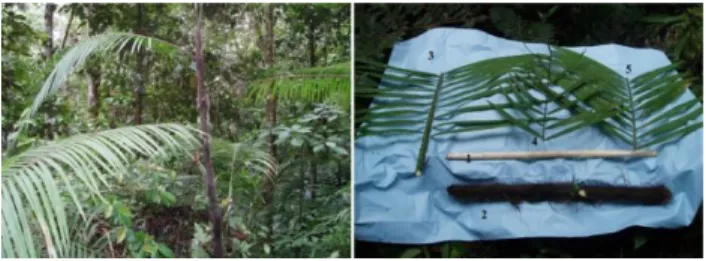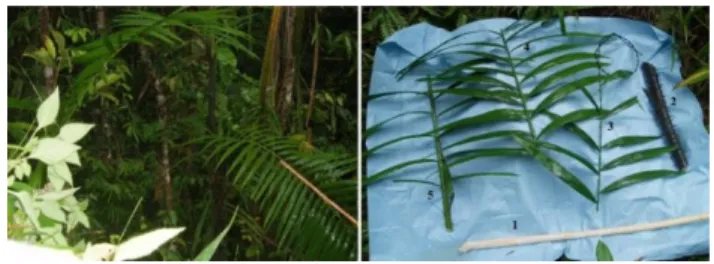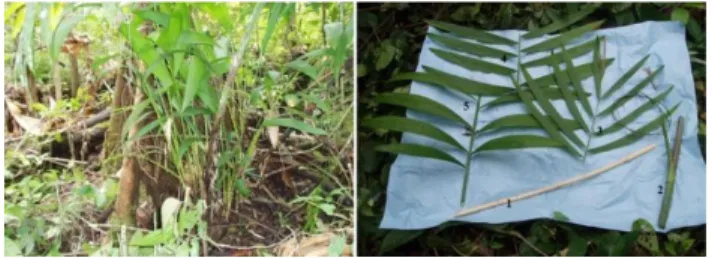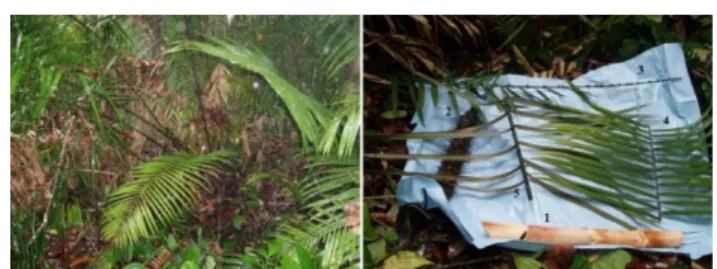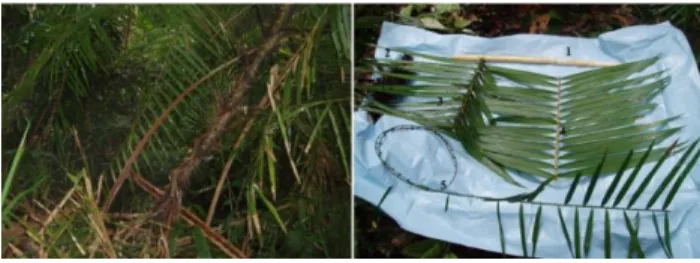There is a lot of popular science content in the article, and it is not a strictly scientific research paper. The title of this article fails to explain the specific content of the article research. The reviewer suggested that the author add the method used in the title, and the limitation of the research area could be explained in the form of a subtitle.
The author should clarify the research purpose of this article in the summary and introduction to help readers understand the research ideas of the article. The author should sort out and summarize the relevant research literature, and briefly present the organization of the article in the last paragraph of the introduction. The author has investigated the diversity of rattan species and can further analyze the reasons for this condition.
The title of the diagram in the text should be placed in the center and maintain a consistent style. In the diversity index formula, the format of the variable must meet certain specifications. The author needs to analyze the internal information in the image to further investigate the nature of rattan biodiversity.
The title of the chart in the text should be set in the center and maintain a consistent style. The reviewer suggested using a three-line form to make the content clearer
The rattan flora of Central Sulawesi is abundant, species-rich and patchy in lowland and mountain forests [8]. And the diversity of rattan species and can further analyze the reasons for this condition. Further research is needed in various Lore Lindu National Park areas to obtain more types of rattan and there is also a need for nurseries of various types of rattan to further increase the diversity of their species while conserving the rattan plant.
The author only conducts a statistical survey of vines within a small research area. Is it statistically representative? There may be some new discoveries and conclusions by
What suggestions does the author have for the results of this article? It can be elaborated in the conclusion of the article
The clarity of Figure 9 in the text needs to be improved. The author should analyze the internal information shown in the picture to further explore the nature of rattan
KETERANGAN ACCEPTED DAN PEMBAYARAN ARTIKEL
Send the remittance receipt or payment screenshot to this email
Copyright Transfer Agreement
Author’s Warranties
User rights
Rights of Authors
Co-Authorship
The Diversity of Rattan Types at Various Height of Growing Areas in Rompo Village Lore Lindu National Park Area, Central Sulawesi Province, Indonesia
Imran Rachman*, Adam Malik, Naharuddin, Andi Sahri Alam
Imran Rachman
International Journal of Design & Nature and Ecodynamics
- Publication Fee
- Termination
- Royalties
- Miscellaneous
- Scope of the Commercial License
Please see the Guidelines for Authors for each IIETA journal for whether the journal charges a publication fee and, if so, how much the journal charges upon publication. This Agreement may be terminated by the Author or Publisher upon two months' notice if the other party has materially breached this Agreement and failed to cure such breach within one month of receipt of the terminating party's notice requesting that a such breach must be remedied. No breach or violation of this Agreement shall automatically terminate this Agreement or any license granted therein or affect the definition of Publisher.
After the expiration of forty (40) years from the date of this agreement, this agreement may be terminated without cause by the author or the Publisher upon two years' notice. This Agreement or any license granted therein may not be terminated except in accordance with this Section 6. To the extent permitted by law, the author waives his or her right to collect royalties relating to the article in respect of any use of the article by the publisher or its sublicense.
The Publisher will publish the article (or have it published) in the Journal if the editorial process of the article has been successfully completed and the Publisher or its sublicense has become obliged to have the article published. The publisher may adapt the article to such style of punctuation, spelling, capitalization and usage as it deems appropriate. The author acknowledges that the article may be published so as to be accessible to the public and that such access will be free to readers.
Publisher will be permitted to sublicense the rights licensed to it under this Agreement. Where this Agreement refers to a license granted to the Publisher in this Agreement as exclusive, the Author undertakes not only to refrain from granting such license to any third party, but also to refrain from exercising the right that is subject to such license otherwise than by performing this Agreement. Publisher will be entitled to enforce the rights licensed to it under this Agreement against third parties to the extent permitted by law.
21 April 2021
The Diversity of Rattan Types at Various Height of Growing Areas in Rompo Village Lore Lindu National Park Area, Central Sulawesi Province, Indonesia
- INTRODUCTION
- METHOD
- RESULTS & DISCUSSION
- Rattan types found in the research area
- Rattan types characteristics
- Rattan pai (Calamus koordersianus Becc)
- Rattan tohiti wulo (Calamus sp)
- Rattan Ibo (Calamus ahlidurii)
- Rattan composition types
- Types diversity indexes
- CONCLUSIONS
The diversity of rattan types at different heights of growing areas in Rompo Village Lore Lindu National Park Area, Central Sulawesi Province, Indonesia. tools used include: 1). The results of observation and data collection obtained as many as 8 types of rattan as presented in Table 1. In general, the shape and nature of rattan can be distinguished based on the number of stems per clump, root system, the form of climbing tools, the form of leaf, flower and fruit development [11].
Slender and solitary creeper, the stem could reach 42 m in height, the length of the leaf with 1 m petioles in the middle, it had a cirrus 50 cm long. The length of the back reaches 1 m, the ends of the stems were covered with thick thorns. Based on the results of observation and identification of rattan species in the research area, 8 (eight) rattan varieties were found (Table 2).
Qabiyyeen gosa raataan bu’aa shallaggii indeeksii gatii guddaa (INP) irratti hundaa’uun gabatee 2 irratti kan dhiyaate yoo ta’u, Raataan (Calamus ornatus var celebicus Becc) dhangala’aa olaanaa 563.75 individuals/ha kan qabu yoo ta’u, raataan (Calamus) itti aanee argama koordeesiyaanus Becc) jedhamuun beekama. ) namoota dhuunfaa/heektaara 229, raataan Batang (Calamus zollingeri Becc) namoota dhuunfaa/ha 183 fi raataan Ibo (Calamus ahlidurii) namoota dhuunfaa/ha 183 ) namoota dhuunfaa/ha 52, Raataan Tohiti Bottle (Calamus sp) nama dhuunfaa/ha 46.25 , Pute raataan (Calamus leiocaulis Becc. Ex.Heyne) 11, namoota dhuunfaa 75/ha, raataan karuku (Calamus macrosphaerica Becc) 10 dhuunfaa/ha, fi gosti xiqqaan Tohiti Wool (Calamus sp) 9.75 dhuunfaa/ha. Gatiin adda addaa sanyiiwwanii hamma olka’u sadarkaan adda addummaa guddaa ta’a.
From the results of the calculation of the ratios of diversity index at the study site, it was obtained from the diversity index of rattan species as presented in Table 3. The advantages of some rattan species are Tohita in addition to rarity, export quality and high price [ 15 ]. The degree of species diversity (H') of Rattan found at the study site is classified as low with an H value of 1.75.
Analysis of revenue optimization in the rattan furniture industry in Palu, Central Sulawesi, Indonesia (case study in PT Meubel Rotan Subur). The advantages of some types of rattan are Tohita, in addition to rarity, export quality and high price.
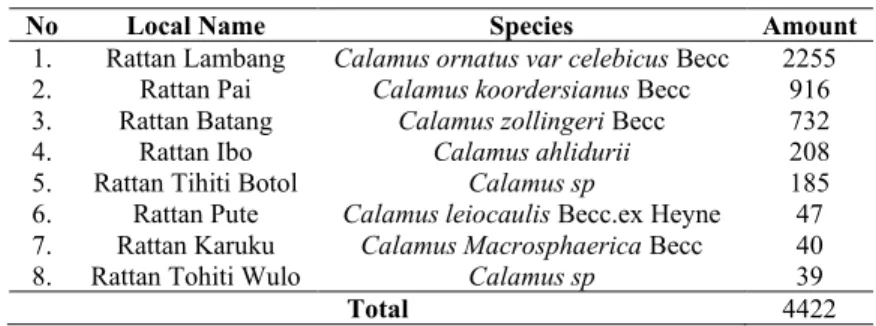
PUBLISH ONLINE
Rattan Species Diversity in Rompo Village Lore Lindu National Park Area, Central Sulawesi Province, Indonesia
Based on table 1, it was known that the number of rattan in the study site was 4422 families consisting of Karuku Rattan (Calamus macrosphaerica Becc) as many as 40 families, Pute rattan (Calamus leiocaulis Becc. Ex Heyne) as many as 47 families , Pai rattan (Calamus coordersianus Becc) 916 families, Tohiti Botol rattan (Calamus Sp) 185 families, Lambang symbol (Calamus ornatus var celebicus Becc) 2255 families, Tohiti Wulo rattan (Calamus Sp) 39 families, Beccalamus zollingeri (Batang) 732 families and Ibo rattan (Calamus ahlidurii) family 39. In general, the shape and nature of rattan can be distinguished based on the number of stems per clump, root system, the shape of climbing tools, the shape of leaf, flower and fruit development [9] . Sometimes several names can be given to one species representing the different uses or the different stages of development of the plant from young to adult.
A thin and solitary rattan, the stem could reach 42 m in height, the length of the leaf with a 1 m petiolus center, it had a cirrus with a length of 50 cm. Leaves up to 2 m long, old green leaf blades covered with long spines in the form of triangles up to 3 cm, geniculate, hairy in the middle with short spines in total 5, short octres, 0.4 m long petiole, hairy with short spines at the top , leaflets up to 40 pairs, arranged neatly, misshapen, prickly on the edges of the leaves. The diameter of the stem with the leaf flap reached 70 mm, the diameter of the leaf without the leaf flap up to 40 mm, the stem (node) stood out, the distance between the books up to 30 cm.
It had a greenish-green flagellum, up to 10 m long, with black spines with a yellow bottom in a partial circle, leaf stem, up to 1 m x 4 cm, usually less, most leaves, 20 - 30 on each side, bottom 50 cm x 5 cm, the largest in the middle, 80 cm x 8 cm, progressing to the smallest tip, 4 cm x 0.5 cm, with a horizontally formed web, the upper surface of the blade is clear near the tip and along the main vein. The most common type of rattan dispersal found in each observation plot was Lambang Rattan (Calamus ornatus var celebicus Becc) with 21.15% dispersal rate, while the lowest rattan species was Tohiti Wulo (Calamus sp ) at 4.14% . The dominant rattan species in the study area based on the highest INP were Lambang Rattan (Calamus ornatus var celebicus Becc) with an INP of 72.14%, followed by Pai Rattan (Calamus coordersianus Becc) with an INP of 39.34%, Rattan Batang (Calamus zollingeri Becc) with INP 33.79%, Rattan Ibo (Calamus ahlidurii) with INP 18.50%, Rattan Tohiti Botol (Calamus sp) with INP 17.29%, Rattan Pute (Calamus leiocaulis Becc ex. Heyne) with INP 7 , 96%, Karuku Rattan (Calamus macrosphaerica Becc) with INP 5.96%, Tahiti Wulo Rattan (Calamus sp) with INP 5.02%.
The type of diversity index reflects the degree of diversity in a community, the high diversity of a community indicates the stability or stability of the ecosystem. Based on Table 3 it was shown that the diversity of rattan type (H') found in the study area is classified as environment, with an H' value of 1.75. The greater the number of species found, the higher the diversity index obtained) [12]. The advantages of some types of rattan are Tohiti except that it is rare, export quality and the price is expensive [13].
It is expected that from the mapping of achieved rattan, permanent plots can be made for nurseries at each growth height, so that certain types of rattan do not die out [9] and can increase the regional original income [15]. The level of species diversity (H') of the Rattan type found at the study site is classified as moderate with an H value of 1.75.
